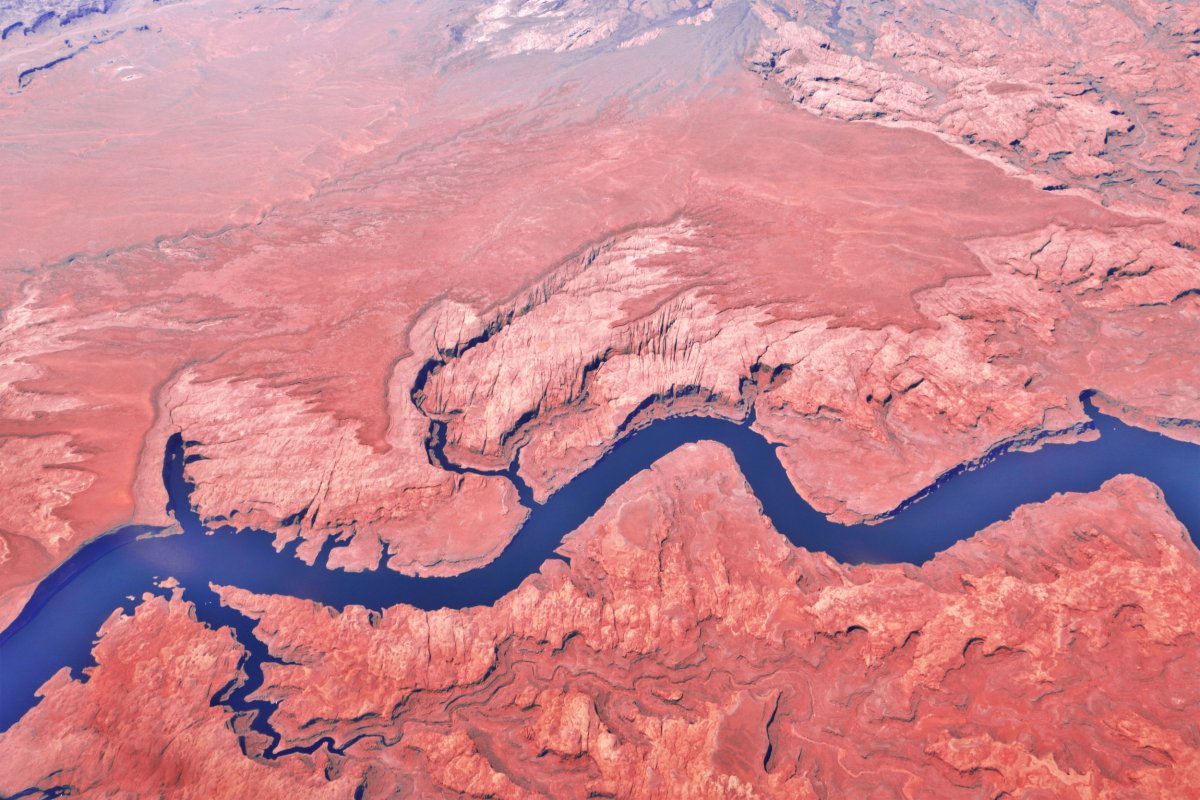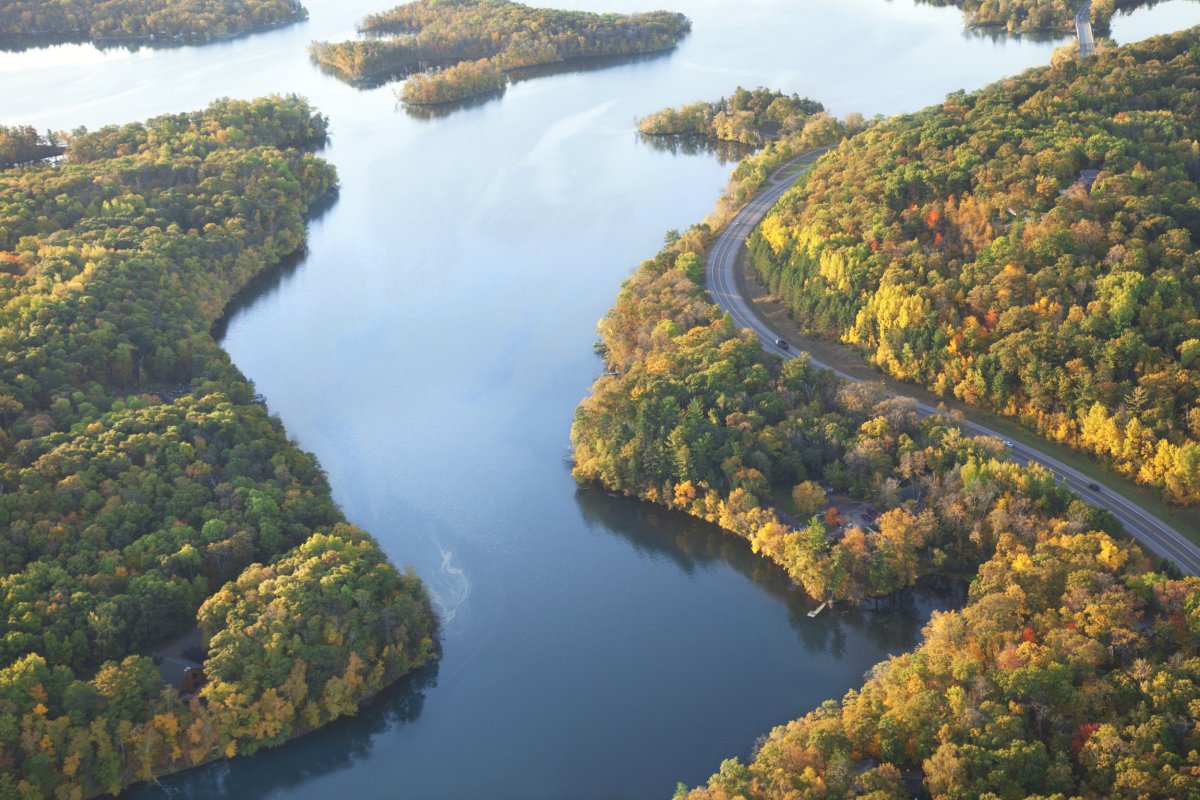The biggest rivers in the U.S. are the lifeblood of the regions they flow through. They provide drinking water, irrigation for agricultural lands and a habitat where important ecosystems can thrive.
But as climate change worsens, some of the nation's most important rivers are in serious trouble because of the drought gripping several regions.
The Colorado River has gained the most media attention in recent years—and with good reason. The river's flows are the lowest they have been in a century. This is having a ripple effect across several important reservoirs, like Lake Mead and Lake Powell, which use flows to produce hydropower.

"The river, as a whole, is unlikely to go completely dry, but it's not unusual in the West for certain stretches of smaller rivers, including Colorado River tributaries, in certain seasons to be completely consumed," Douglas Kenney told Newsweek. He is the director of the University of Colorado Law School's Western Water Policy Program, in the Getches-Wilkinson Center for Natural Resources, Energy and the Environment.
"On the main stem of the Colorado, this doesn't happen, but there is a possibility that water levels in Lake Powell could fall so low that it becomes impossible to release water downstream, which conceivably could dry up stretches of the river flowing through the Grand Canyon," Kenney said. "I certainly don't expect that to happen, but it's the sort of threat that water managers have to proactively address in this new era of scarcity. Business as usual would lead to disaster."
The Colorado is one of the most important rivers across the Southwestern U.S. and northern Mexico. In fact, life in the Southwest exists as we know it today because of the river.
It irrigates water for around 40 million people in the surrounding areas and supplies water to 5 million acres of farmland. But over the past century, the river's flow has dropped by 20 percent, according to data from the United States Geological Survey.
"For most people in the Southwest, their life won't noticeably be changed by water scarcity," Kenney said. "Cities are likely to scale back and perhaps entirely eliminate lawns and other thirsty landscaping, and building permits may become scarce in some specific localities, but these types of impacts are manageable."
The situation is very different for the region's farmers, according to Kenney.
"It seems inevitable that water use in agriculture will be reduced, either voluntarily or involuntarily, and that almost always requires taking irrigated lands out of production," he said. "That can be really painful in both an economic and cultural sense, especially for those rural communities that exist to support agriculture. An increasingly dryer Southwest is also an existential threat for the region's fish and wildlife. It's a challenging time."
Even though the Colorado has gained the most attention, it is not the only river in trouble.
"There are also issues with rivers in the Eastern U.S. Some of these rivers supply a considerable amount of drinking water to the U.S.," said Sujay Kaushal, a professor in the Department of Geology and the Earth System Science Interdisciplinary Center at the University of Maryland.
"Our work has documented that the interaction between climate variability, and land use change—urbanization and agriculture—has amplified pollution to streams and rivers," Kaushal told Newsweek. "There has been increased variability in droughts and floods in the Potomac River over the last century, and this is the drinking water supply for the nation's capital, Washington, D.C."
He continued, "Our work has shown that contaminants like nitrogen and phosphorus are stored and build up during droughts and then are rapidly flushed downstream during wet years. These flushing events are associated with some of the worse dead zones—areas of hypoxia—in the Chesapeake Bay."

In recent months, there have also been concerns about the Mississippi River. This past winter, the river's flows were the lowest they have been in a decade. The river is the second largest in the U.S. and provides drinking water to around 20 million people. Although water levels have risen slightly with the wet season, drought continues to threaten several regions, and it remains to be seen what happens during this summer.
In Idaho, the Snake River had its lowest-ever water levels in 2021. The river runs through the Pacific Northwest all the way to the Columbia River in Washington.
But pollution and allocation issues are causing the river's levels to dwindle. The Snake has been plagued with toxic algae because of this, which in turn is destroying wildlife and making the water unsafe to touch.
Climate change is not just causing drought and subsequently low water levels. It is also affecting U.S. rivers in other ways.
Kaushal said that there have been long-term warming trends in streams and rivers across the U.S., which can affect the abundance and diversity of aquatic life.
"Rising temperatures can also enhance the toxicity of certain contaminants as a multiple stressor to aquatic life," he said. "In addition, rising temperatures can accelerate the decomposition and breakdown of organic matter, which can affect the oxygen levels, taste and odor of water."
Rivers in the Eastern U.S. have become more alkaline over time because of decades of acid rain dissolving rocks and pavement releasing alkaline salts into waterways, Kaushal said.
"The changes in alkalinization and pH can also affect the types of aquatic life and toxicity of ammonia at elevated levels," he continued. "One of our most important findings regarding how U.S. rivers have changed over time is that they are becoming saltier. We first documented increasing salinization of fresh water in the Northeastern U.S., including major drinking water supplies."
About the writer
Robyn White is a Newsweek Nature Reporter based in London, UK. Her focus is reporting on wildlife, science and the ... Read more
To read how Newsweek uses AI as a newsroom tool, Click here.





